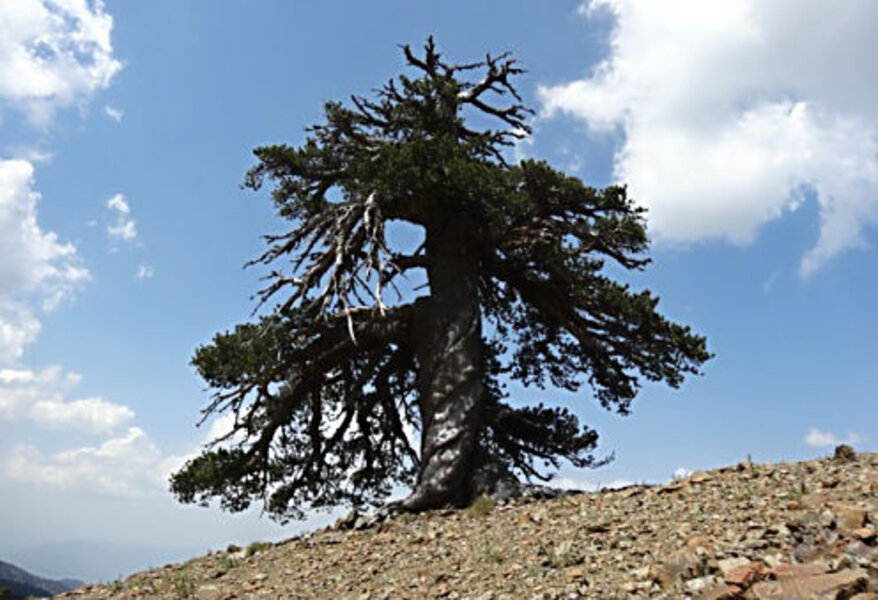A Bosnian pine named 'Adonis' may be Europe's oldest-living tree
Loading...
Europe's oldest officially dated tree has been uncovered in Greece, and despite living more than a millennium (and counting!), it doesn't look a day over 200.
The tree, dubbed "Adonis" by the scientists who discovered it, is a Bosnian pine (Pinus heldreichii) that took root in A.D. 941, high in the Pindus mountains of Greece. (In ancient Greek mythology, Adonis was the god of beauty, youth and desire.)
"It is quite remarkable that this large, complex and impressive organism has survived so long in such an inhospitable environment, in a land that has been civilized for over 3,000 years," Paul J. Krusic, a dendrochronologist at Stockholm University in Sweden, and the leader of the expedition that found the tree, said in a statement. (Dendrochronology is the study of tree-ring dating.) [Nature's Giants: Photos of the Tallest Trees on Earth]
The venerable tree lives within a pristine forest of ancient pines that are nearly as old, the researchers said.
Grove of ancient trees
Researchers first discovered the tree during a research trip run by the Navarino Environmental Observatory (NEO), which was analyzing tree rings for evidence of the region's past climate. Krusic had first heard about this grove of ancient trees while studying for his thesis, but it was only recently that he was able to visit.
To determine Adonis' true age, the team drilled a core from the tree that reached from its heart to the outer bark. Then, they counted the tree rings, which alternate by season. The thickness and color of tree rings can also reveal clues about the historical climate. To officially date the tree, the team also compared Adonis' tree rings to those of its neighbors in the forest. Because trees occasionally have skipped rings or lay down extra rings because of drought or other environmental conditions, comparing a tree to nearby ones to account for such anomalies is the only way to get an accurate estimate of a tree's age from its rings, Krusic told Live Science.
When the researchers tallied up the rings, they found that Adonis was an impressive 1,075 years old and had a core of 3.3 feet (1 meter). When Adonis was just a seedling in A.D. 941, the Vikings were still raiding the European coastlines.
Still, while the Greek tree is incomprehensibly old compared to the average human or even the oldest living animal, it is a young whipper snapper compared to other European trees believed to be older, yet not officially dated. For instance, the oldest tree in Europe, the Llangernyw yew tree in Wales, is thought to be at least 3,000 years old, while Kongeegen(or the "king's tree") in Denmark's royal hunting forest is thought to be between 1,500 and 2,000 years old.
The world's oldest tree, an unnamed bristlecone pine that lives high up in the White Mountains in California, is more than 5,000 years old, while dozens of giant sequoias in California are thought to be between 3,000 and 3,500 years old.
Meanwhile, a clonal colony of quaking aspen in Utah called Pando is thought to be at least 80,000 years old. (Clonal colonies are made up of groups of genetically identical creatures.)
Original article on Live Science.
Editor's Recommendations
- What Is the World's Largest Tree
- Gallery: Oldest Living Things in the World
- Giant Sequoias and Redwoods: The Largest and Tallest Trees
Copyright 2016 LiveScience, a Purch company. All rights reserved. This material may not be published, broadcast, rewritten or redistributed.







